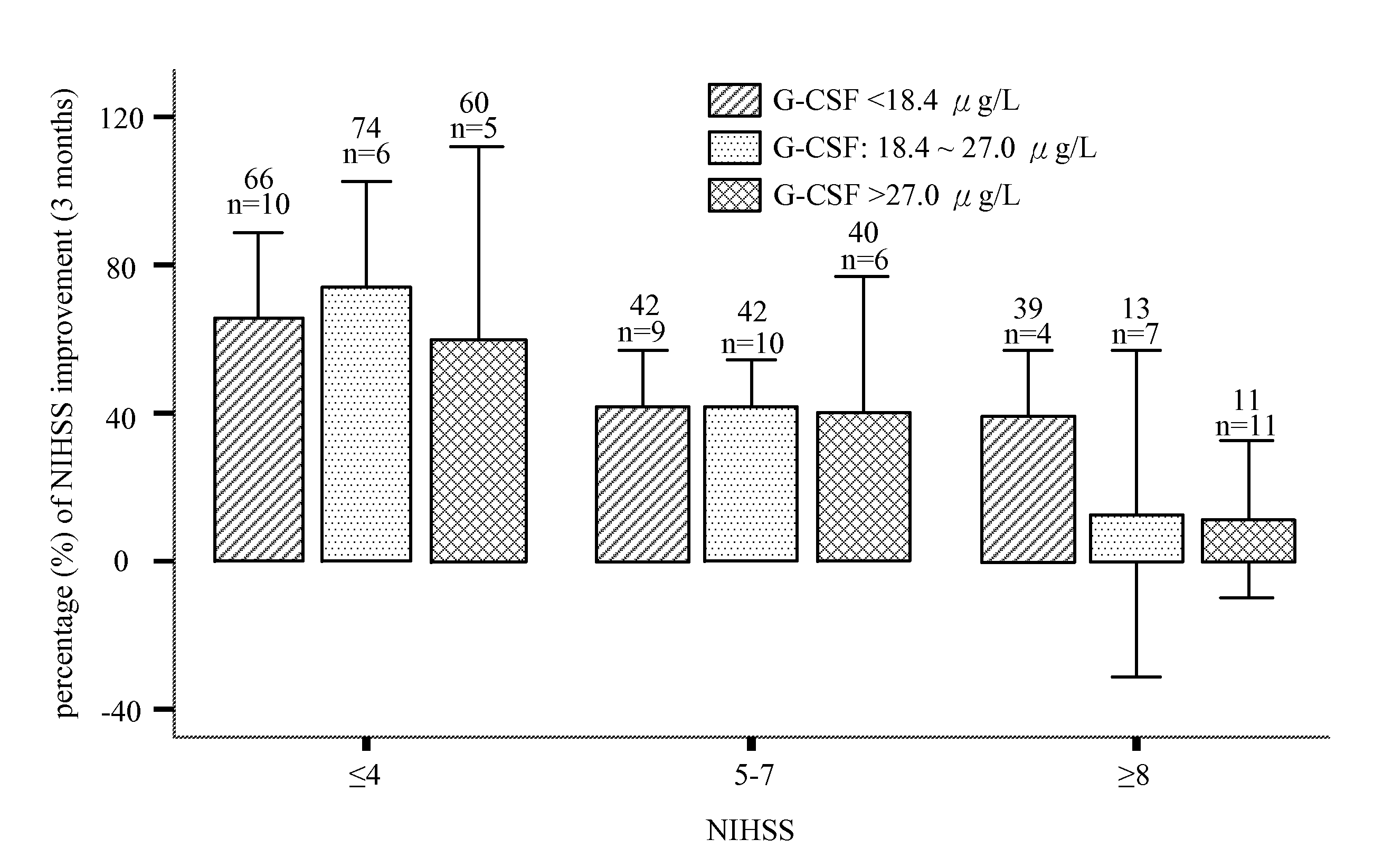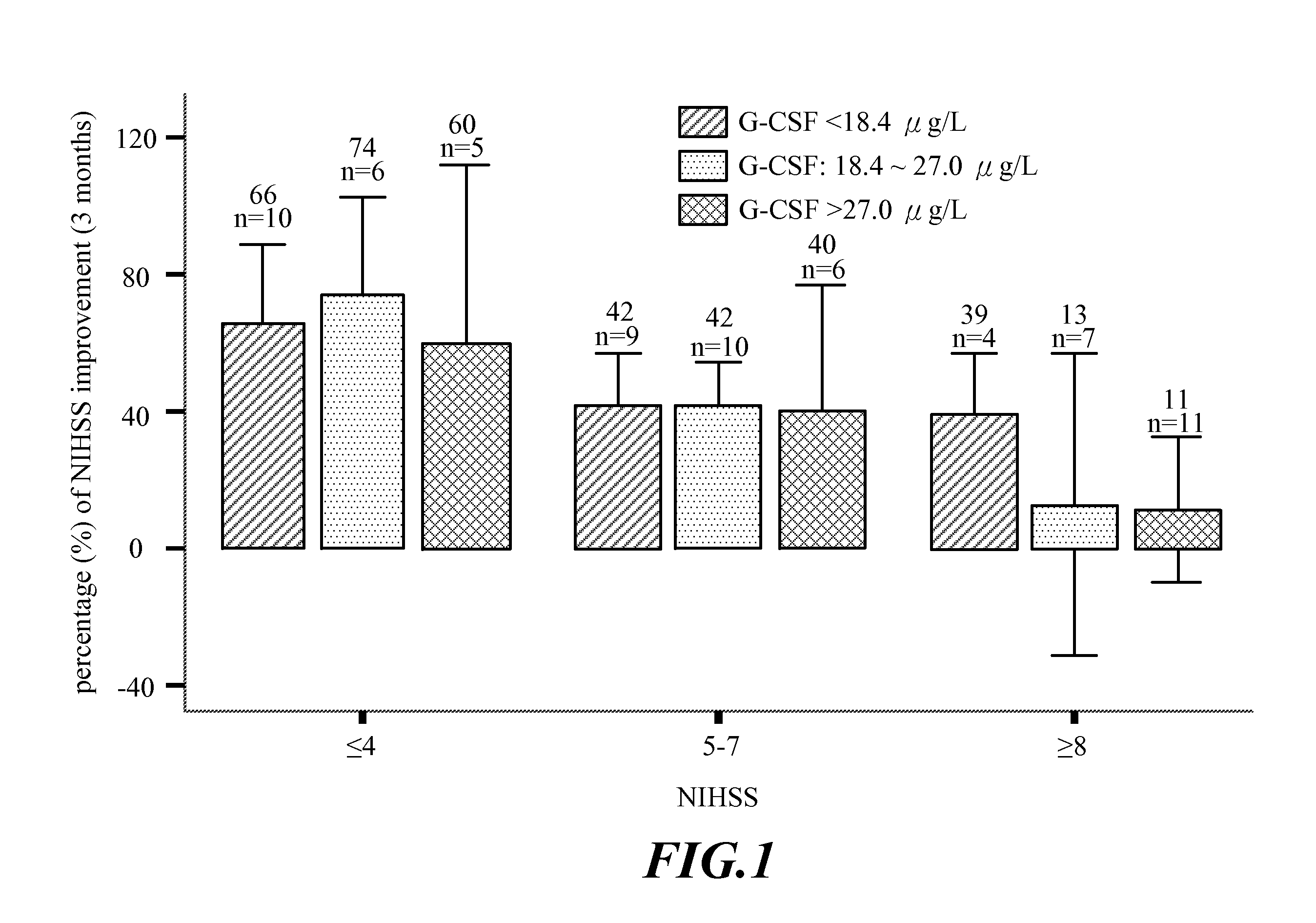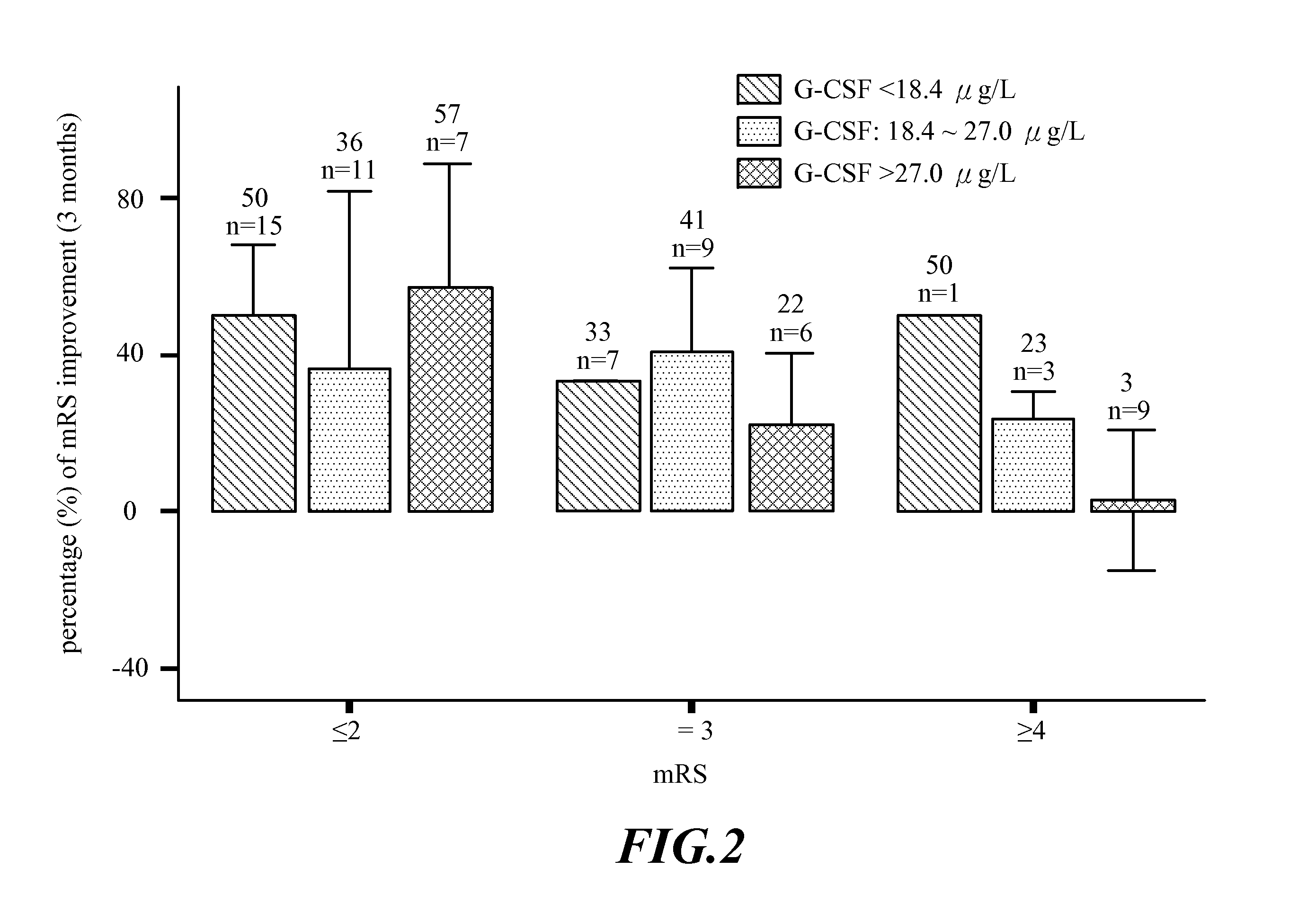Prognosis Biomarker for Evaluating the Cure Level of Stroke Patient and a Method thereof
a stroke patient and biomarker technology, applied in the field of prognosis biomarker for evaluating the cure level of a stroke patient, can solve the problems of affecting the treatment effect of patients, so as to improve the cure level, improve the treatment effect, and improve the prognosis
- Summary
- Abstract
- Description
- Claims
- Application Information
AI Technical Summary
Benefits of technology
Problems solved by technology
Method used
Image
Examples
example 1
Material and Method
1. Patients Selection
[0037]Total of 75 patients were recruited from the Kuang-Tien General Hospital, Taichung, Taiwan. Patients were included if 1) the clinical diagnosis was acute ischemic stroke, 2) onset was within 24 hrs, 3) the diagnosis was confirmed on brain CT or MRI and 4) they are older than 18 years. Subjects were excluded if 1) the diagnosis was intracranial hemorrhage, or 2) there were other vascular abnormalities.
2. Stroke Severity Evaluation Tools
[0038]The National Institute of Health Stroke Scale (NIHSS) and modified Ranking Scale (mRS) were used as stroke severity evaluation tools.
(1) National Institute of Health Stroke Scale, NIHSS:
[0039]The United State National Institute of Health Stroke Scale (NIHSS) is used to evaluate clinically at early stage the deficit degree of neuro function of a patient, and even assesses the prognosis, disease severity of a patient. NIHSS is consisted of 15 items, including: level of consciousness (LOC), LOC questions...
example 2
Result
[0060]Tertile function of SPSS was used to divide 75 acute stroke patients into three groups based on NIHSS / mRS scores of each patient as followed:[0061]low NIHSS group: NIHSS≦4 points; or mRS≦2 points;[0062]middle NIHSS group: 7 points≧NIHSS≧5 points; or mRS=3 points;[0063]middle-high NIHSS group: NIHSS≧8 points; or 4 points≦mRS≦6 points.
[0064]Within these three groups, there was no significant variation in baseline demographic data (see Table 1) including age, sex, body mass index, smoking index, and incidence of valvular heart disease, hypertension, hyperlipidemia and diabetes mellitus. The middle-high NIHSS group had significantly higher mRS scores (p=0.031) than those in the low NIHSS groups. Accordingly, there was a positive relationship between modified Ranking Scale (mRS) score and the United State National Institute of Health Stroke Scale (NIHSS) score, and could be used as classification criteria for evaluating stroke severity.
TABLE 1Baseline Demographics of Subjects...
PUM
| Property | Measurement | Unit |
|---|---|---|
| Fraction | aaaaa | aaaaa |
| Fraction | aaaaa | aaaaa |
| Fraction | aaaaa | aaaaa |
Abstract
Description
Claims
Application Information
 Login to view more
Login to view more - R&D Engineer
- R&D Manager
- IP Professional
- Industry Leading Data Capabilities
- Powerful AI technology
- Patent DNA Extraction
Browse by: Latest US Patents, China's latest patents, Technical Efficacy Thesaurus, Application Domain, Technology Topic.
© 2024 PatSnap. All rights reserved.Legal|Privacy policy|Modern Slavery Act Transparency Statement|Sitemap



